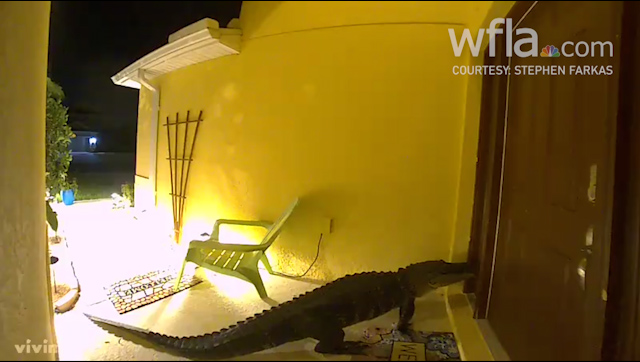TAMPA, Fla. (AP News) – With more rehabilitation facilities, urgent cares, walk-in medical clinics and outpatient facilities, it is easier than ever to get medical treatment outside of a hospital or doctor’s office. But will there be enough nurses to provide proper care?
Amid a potential nursing shortage that threatens Florida’s healthcare system, the state’s universities and colleges are devising creative solutions to graduate more nurses.
The Florida Center for Nursing predicts the healthcare demand from baby boomers at the same time that 40 percent of existing nurses will be retiring could create a need for 114,000 more nurses by 2023. Yet, more people are vying for spots in nursing programs than there are positions available. Florida universities report turning away as many as two-thirds of applicants seeking a bachelor’s in nursing degree.
Tapping into technology, however, may help.
One solution is a change in how registered nurses get real-world practice with patient care. Most nursing programs require students to complete clinical hours in hands-on medical care environments in addition to their classroom learning. Universities say this requirement, along with a shortage of nursing faculty, has forced them to limit enrollment.
“Every hospital works with multiple schools, but there is a limit on how many students at one time they can have in a clinical setting,” said Dr. Safiya George, the new dean of the Christine E. Lynn College of Nursing at Florida Atlantic University in Boca Raton. “Even if you built a bigger auditorium for classes, you have to have enough clinical partnerships for students to get their hands-on hours.”
Enter simulation labs.
FAU and an increasing number of nursing schools in Florida are offering simulation scenarios to give students experience with patient care.
At Florida International University’s Simulation Teaching and Research (STAR) Center, nursing students can witness a live birth, a heart attack, or a devastating sports injury and interact with a mannequin who simulates a patient. The simulation center on the FIU main campus in Miami has a 15-bed critical care unit, primary care offices, prep-scrubbing stations, a virtual dissection table, and operating rooms equipped with surgical instruments. In the controlled environment, students get on-the-spot feedback from a teacher and practice communicating with a patient’s simulated family members.
“We mirror what’s happening in hospitals,” said Henry Henao, director of FIU’s STAR Center. “Except students get to make the decisions rather than just observe the decisions.”
A change in the rules.
After a two-year study in which FIU participated, Florida’s State Board of Nursing now allows students to get up to half of their clinical hours in simulation labs.
For the 2018-19 school year, FIU accepted 120 undergraduates into its bachelor’s in nursing program. “We would be unable to accept as many as we do if not for the simulation center,” said Dr. Ora Strickland, dean of the Nicole Wertheim College of Nursing and Health Sciences at Florida International University. Throughout the state, most universities already have or are working to increase undergraduate class size.
Strickland said FIU uses the simulation center also to educate nurse practitioners, nurse anesthetists and nursing graduate students. And the university also has a simulation center to train nurses in home-based care.
“Now that patients are spending less time in hospitals, we have to teach our students how to work with patients and families in the community and home setting,” Strickland said.
Steering nurses in the direction of home health and skilled nursing could prove challenging. The Florida Center for Nursing estimates the state has about 12,000 nursing vacancies, twice as many as in 2009.
Mary Lou Brunell, executive director of the Florida Center for Nursing, said the increasing need in Florida will come from facilities such as rehabilitation centers and nursing homes that cater to the aging baby boomer population.
That path, however, is a tougher sell.
“Entry level jobs are easier to find in home health or urgent care or hospice,” said 2019 FIU nursing graduate Ashley Mathews. “For me and my classmates though, a hospital setting is where we would like to be.”
Florida’s previous attempt to graduate more nurses hasn’t panned out as expected.
In 2009, Florida made it easier for new nursing schools to open, limiting the power of the state Board of Nursing to turn down viable programs. In 2018, 354 nursing programs enrolled students — including an assortment of technical schools and private colleges offering associate degrees.
The result is too many students are failing the state license exams as the demand for nurses increases. Florida has the lowest pass rate on the national nursing exam of all 50 states plus the District of Columbia.
Health advocates caution that without enough new nurses, those practicing will be forced to care for large numbers of patients at a time, leading to inferior care and nurse burnout.
At Florida Medical Center in Fort Lauderdale, the National Nurses United of Florida picketed last week alleging those concerns already are occurring. In response, Tenet Health, the hospital owner, said its labor practices comply with all state and federal guidelines.
To defray a reduction in quality of care, Brunell advocates a three-prong approach to addressing a shortage: graduate more new nurses, improve the work environment to retain existing nurses, and redesign work to accommodate older nurses.
South Florida hospitals say they are aggressively recruiting, partnering with colleges to offer programs that provide a direct pipeline for top nursing students, and coming up with new ways to fill their nursing needs.
Kerry Major, the chief nursing officer for Cleveland Clinic Florida region and Cleveland Clinic Weston, said her staffing gap is in experienced nurses, rather than entry-level positions. About 20 percent of her nursing workforce is nearing retirement. “The challenge is we can’t fill every position with a new grad. We need experienced nurses to train the new talent,” Major said.
The hospital is offering reduced hours to nurses close to retirement age and tuition reimbursement to hospital workers who want to go to school to become a nurse.
“With the growth in our elderly population, we are definitely going to need nurses to meet that demand,” she said.


